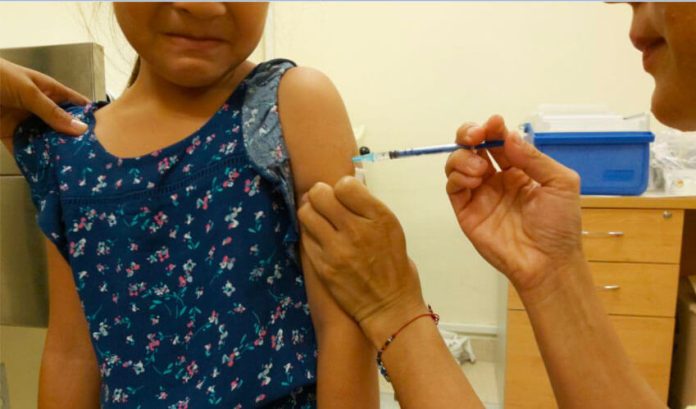COVID-19 isn’t the only respiratory illness gaining ground in Mexico – a massive increase in influenza cases has also been reported.
Health Ministry data shows there were 1,261 confirmed cases of influenza between October and the first week of January. In the same period of 2020-21 just seven cases were detected.
Deaths attributed to influenza rose to 22 from just one in the same period a year earlier.
Data from the Health Ministry’s epidemiology unit shows that just under one-third of influenza cases – 31% – were detected in people aged 20-29 and that 54% of cases were detected in women.
Quintana Roo has recorded the highest number of cases this flu season with 219 followed by Yucatán (192), Nuevo León (186), Tabasco (102) and Sonora (69).
In an interview with the newspaper El País, infectious disease specialist and University of Guanajuato academic Alejandro Macías said the symptoms caused by the omicron variant of the coronavirus and those caused by influenza are so similar that a diagnosis of one illness or the other is not possible without a PCR test.
He noted that there was practically no influenza a year ago – when Mexico was facing a second wave of coronavirus cases – but acknowledged that the viruses that cause the disease are currently circulating.
However, without testing “it is very difficult to know how much of what we’re seeing is influenza and how much is COVID,” Macías said.
He said that the decline of the delta-fueled third wave of coronavirus allowed influenza to gain a foothold but predicted that the incidence of the disease will fall due to the growing prevalence of the highly contagious omicron strain.
Concurrent infection with the coronavirus and influenza – so-called “flurona” – is possible, but the World Health Organization (WHO) says that co-infections are fairly rare.
“More evidence is required to better understand the interactions between the two viruses and if the severity of illness is higher when influenza and SARS-CoV-2 viruses co-infect, especially in the high-risk individuals and the elderly,” the WHO told the news agency Reuters.
At least three cases of “flurona” have been detected in Mexico – two in Jalisco and one in the neighboring state of Nayarit.
More than 82 million Mexicans are vaccinated against COVID-19, but the number of people who have received flu shots this flu season is much lower.
An influenza vaccination campaign began in early November with the goal of administering some 32.3 million shots over a period of five months. The shots are mainly administered in public clinics and hospitals such as those run by the Mexican Social Security Institute, or IMSS.
With reports from El País
